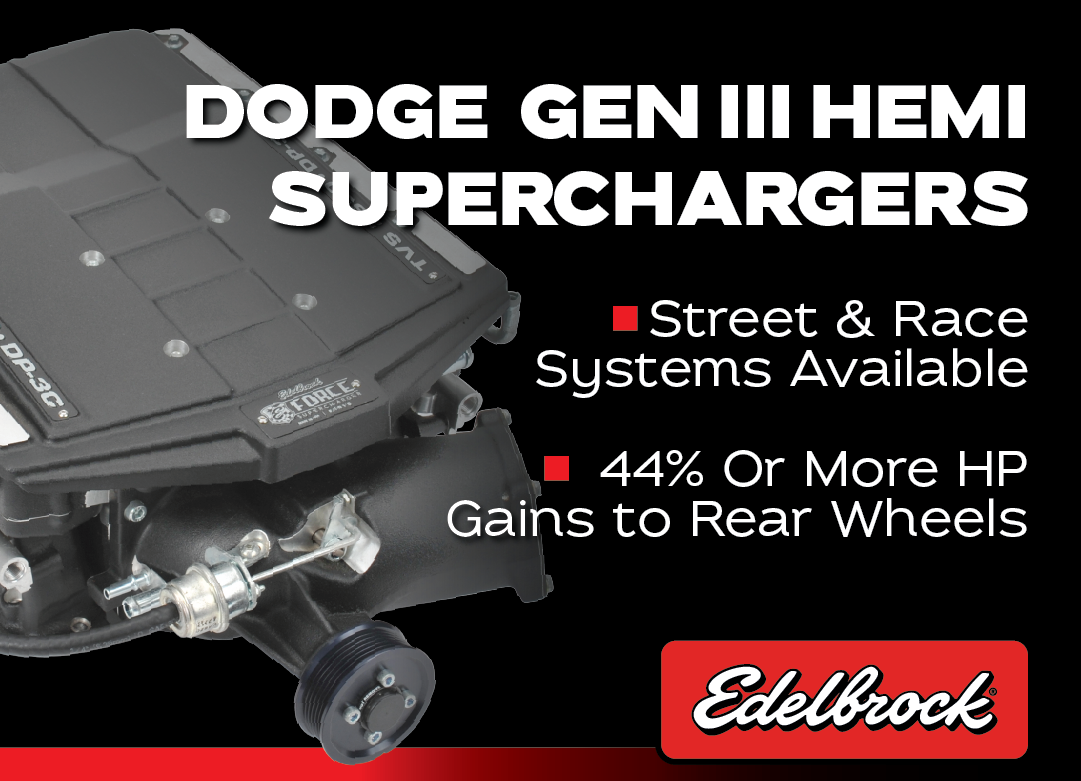
For better control of your muslcecar you might have considered adjustable shocks. What was once a product primarily used on racecars has become a popular choice for anyone with classic musclecar to help fine tune the suspension and provide a better ride for the street, better launches at the drag strip, and more control for spirited driving and open track days. QA1 has been in the shock absorber game since 1998, and today offers a complete lineup of shock absorbers from conventional to quad-adjustable coil-overs for thousands of applications.
Because the internals of the double-adjustable shock are different to accommodate two adjusters versus one adjuster, the double-adjustable shock does build more force than the single-adjustable.Unlike gas shocks, which are built on gas pressure to expand the shock at rest and supply force on compression, QA1’s adjustable shocks rely on oil pressure and valving to provide pressure on the compression and rebound stroke of the shock absorber. For single-adjustable shocks, it’s simply recommended to set the shock at 4-6 clicks up from 0 and make adjustments to suit your driving style. It’s pretty simple, and setting it too high will give your car the feeling that you’ve put ridiculously strong springs on your car, too low and you’re likely to bottom out. But getting into the double-adjustable shock puts you in far better control, and instead of four adjuster knobs that are much easier to tune, eight knobs with hundreds of combinations await you.
Other than the obvious, we asked QA1’s Dave Kass what the differences are inside the shock by adding that second knob. “The two knobs allow for completely independent control over the compression and rebound stroke of the shock,” he told Mopar Connection Magazine. “Because the internals of the double-adjustable shock are different to accommodate two adjusters versus one adjuster, the double-adjustable shock does build more force than the single-adjustable. Using the 6 clicks example, the double-adjustable will be stiffer on setting 6 than the single. They are the same on 0, but the double will build force quicker than the single, and will be stiffer at setting 18 than the single.”

Are Double-Adjustable More Trouble Or Better Control
For the novice just getting into double-adjustable shock almost seems like it’s a lot of work for little reward. Some people have them just because they can, and set them once and never touch them again. But they’re truly missing out on the whole reason for having double-adjustable shocks: performance driving. If you’re fine with your weekend car shows, and trips to the park, the single-adjustable, or non-adjustable for that matter, might suit you fine. But for the enthusiast who enjoys taking their car to the strip or an open track day, there’s a lot of options when it comes to double-adjustable, and that’s the focus for us here.
But first and foremost, people need to understand that setting a single-adjustable and setting a double-adjustable are completely different programs. While QA1 can give you a good base to start from with either shock absorber, there isn’t really any way that someone can tell you what’s best for your double-adjustable shocks without all factors and driving the car themselves. Since these are primarily for performance applications, the settings will change depending on where you’re using them, and if you’re driving the car to and from the venue where you’re racing for the weekend, you might want to crawl under the car and make adjustments for the ride to-and-from the track.
It might take some time getting used to how a double-adjustable shock works, and how it reacts to certain settings. It would be easier if you could just take a lap around a bumpy neighborhood and between laps someone could crawl under your car and turn the knobs each time. But that would literally be a couple hundred laps around the block before you experience all of the adjustments possible, and it doesn’t have to be that difficult. Our goal is to help make these adjustments a little simpler, and to help remove some confusion of shock absorber settings.

Street And Road Race Settings
The first thing that you really need to know is that you won’t ever need to experience some of the extreme-end of the settings, and there’s usually a starting point that is based on the vehicle itself with regards to weight and driving style. Sending a car out on the road with all shocks adjusted to minimum or maximum is just asking for trouble, so for the first trip with your QA1 double-adjustable shocks there’s a recommended setting to start with, and you can simply make one- or two- click adjustments for street driving. Then the fun starts, and you get to learn a little more about compression and rebound.
We asked Kass a couple of questions about settings, starting with soft compression and a firm rebound. He said, “Soft compression and stiff rebound is a common valving formula for street and handling oriented cars. Soft compression will allow the suspension to soak up the bumps, but too soft will allow the tire to bounce off the road. Stiff rebound will help keep the inside of the car tied down when cornering, or the back down when braking, but too stiff will not allow the tires to get back to the road quick enough, which results in a harsh ride.”
Then we asked about the opposite setting, if compression is too firm, and rebound is too soft. “The car will feel very floaty when cornering, and very harsh when you hit bumps and irregularities in the road, such as cracks, expansion joints, etc. Because the rebound is soft, the inside of the car will have a tendency to unload, creating body roll, as weight transfers from one side to the other. The stiff compression valving will not allow the suspension to get out of the way of bumps quick enough which will result in a very harsh ride.”
The issue we see with making adjustments like this is that you can’t get too creative or crafty when you’re trying to find a better ride, so starting out with too much on either knob just opens up problems in the ride. Everything in moderation is the key for setting up street and road racing applications: start with your 4-6 clicks and make 1-2 click adjustments from there. Keep in mind, even professional racers will make adjustments between laps, and especially between tracks. The only way they can make these adjustments is by being out on the track to see how the car is reacting in different corners, and how the car reacts to bumps and irregularities in the road. That’s what practice is all about: it’s not just breaking in an engine or getting used to the power, it’s for getting a feel for the suspension for better lap times.

Drag Racing Settings
Now that we’ve told you about making general settings, and adjusting a click or two at a time, here’s where the whole theory changes. Drag racing isn’t about cornering forces or handling: it’s about weight transfer. The ultimate goal is to control the wheelie and get the weight on the back end of the car. Now, this doesn’t mean you need to get the front end in the air every launch, but what you want to do is control that launch better by getting the front end lighter and the rear end heavier.
In order to get better launches, it’s also important to know that your torsion bar and leaf springs play an important role in drag racing, and work in conjunction with double-adjustable shocks. Kass said, “Soft torsion bars will be the same as soft coil-springs. The more the torsion bar twists (or coil spring compresses), the more energy it stores. The more stored energy the spring has, the more it’s going to help pop the front end up when you launch. The double-adjustable shock will allow you to have soft rebound valving to take advantage of that stored energy by being able to adjust the rebound valving to control the speed at which the front end comes up. If you have a car that can pull the wheels up violently, a double-adjustable shock will allow you to slow down the front end rise by stiffening the rebound valving.”
We also asked if there is a proven benefit to using double-adjustable over single-adjustable. He told us, “It really depends on the power level of the car. The more violent the car can launch, the more critical the shocks have to be. A car that does a 13.50 second ¼ mile won’t need as much control as an 8.90 second car. On a lower powered car, the value of a double-adjustable is going to be in the ability to change from a drag race setting to more of a street setting without compromise. Single-adjustable shocks need to be tailored towards one discipline, so if you’re changing between driving styles, you will need to choose one direction and compromise/sacrifice the other.”

Benefits To A Double-Adjustable Shock
Kass added, “One of the great values of a double-adjustable shock is that you can tune it for different disciplines. For example, shocks for the front of a drag car (soft rebound, stiff compression) will want completely different valving than a street car (softer compression, stiff rebound). Think about the compression valving as being used for controlling the wheel when you hit bumps in the road, and the rebound for controlling weight transfer – front to back for drag cars, left to right in cornering situations.”
With regards to how the double-adjustable shocks handle harsh road conditions, Kass had this to say, “The rebound valving, outside of controlling weight transfer, also controls the wheel coming back to the normal road surface after hitting bumps. An air-filled tire will have a tendency to try to bounce off of bumps if undamped. The rebound is what will control how quickly the shock can recover back to the normal road surface after the bump. If it’s too stiff, gravity will push the car down quicker than the shock can react to, which will actually feel like the car dips back down to the road after the bump. It also controls how quickly the wheel/tire can fill voids or dips in the road surface. If too stiff, the wheel will have a tendency to jump the gap and hit the other side of the dip, giving you a harsh feeling, because the shock now has to compress very quickly.”

Where the single-adjustable can give you a better ride than those old gas shocks, they are still only going to provide one setting. This is still better than a gas shock, which only exerts forces when compressed. You’ll notice with QA1’s adjustable shocks that the shock absorber will stay where it is: it will neither expand or compress no matter where the knob is set. When you’re installing them, it’s far easier to set the knob at zero clicks so you can expand it to fit the eyelets. If it’s at six or more clicks, it’s likely you won’t be able to move the damper without giving yourself a hernia.
The double-adjustable shocks, however, will give you plenty of room for fine tuning, and that’s the beauty of having a double-adjustable shock. It’s like having your cake and eating it, too, because unlike coil springs, you won’t have to change your shocks every time you hit a new track: you simply have to make adjustments. Remember: consistency is the goal here. Kass reminded us, “Another thing to remember is that consistency is the goal, not always the lowest possible 60ft time. The more consistent your launch is, which will vary throughout the day as the track heats up and more rubber gets put down, the better you’ll be able to judge your car at race time.”
If the information above isn’t enough to convince you that you need to invest in double-adjustable shocks, there’s one more benefit to QA1’s offerings: they’re rebuildable. When it comes time to replace seals and o-rings, QA1 sells kits and the oil needed to rebuild your shocks, or they can do it for you. Be sure to visit the QA1 website and see what they have to offer for your car, whether you’re looking at a simply shock absorber upgrade or a complete suspension overhaul, they’ve got what you need for better lap times, and quicker ETs.













 Mopar Connection Magazine – The ONLY Daily Mopar Magazine © 2022. All Rights Reserved. Mopar Connection Magazine is the ONLY daily Mopar Magazine bringing you the latest Mopar news, technology, breaking news, and Mopar related events and articles. Find out the latest information about Mopar, Mopar products and services, stay up to date on Mopar enthusiast news, dealership information and the latest Mopar social media buzz! Sign up for the Mopar Connection Magazine newsletter for the latest information about new products, services and industry chatter. Mopar Connection Magazine is the best and only source you need to be a Mopar industry insider!
Mopar Connection Magazine – The ONLY Daily Mopar Magazine © 2022. All Rights Reserved. Mopar Connection Magazine is the ONLY daily Mopar Magazine bringing you the latest Mopar news, technology, breaking news, and Mopar related events and articles. Find out the latest information about Mopar, Mopar products and services, stay up to date on Mopar enthusiast news, dealership information and the latest Mopar social media buzz! Sign up for the Mopar Connection Magazine newsletter for the latest information about new products, services and industry chatter. Mopar Connection Magazine is the best and only source you need to be a Mopar industry insider! by
by